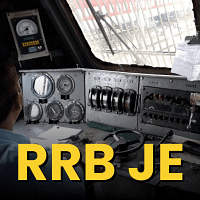Railways Exam > Railways Questions > In Linux and Unix CTRL+D is used to _______....
Start Learning for Free
In Linux and Unix CTRL+D is used to _______.
- a)Cancel the currently running command
- b)Turn all output stopped on the screen back on (XON)
- c)Erase the completed line
- d)Closes the command line shell
Correct answer is option 'D'. Can you explain this answer?
| FREE This question is part of | Download PDF Attempt this Test |
Verified Answer
In Linux and Unix CTRL+D is used to _______.a)Cancel the currently ru...
CTRL + D closes the command line shell. This sends an EOF (End of file) marker to the shell, and the shell exits when it receives this marker. This is similar to running the exit command.
View all questions of this test
Most Upvoted Answer
In Linux and Unix CTRL+D is used to _______.a)Cancel the currently ru...
Explanation:
In Linux and Unix, the CTRL D key combination is used to close the command line shell. Let's break down this answer into the following sections:
1. Shortcut Key Combination:
- CTRL D refers to the combination of holding down the Control key (CTRL) on the keyboard and pressing the letter D simultaneously.
2. Closing the Command Line Shell:
- When you are working in a command line shell, such as the Terminal in Linux or Unix, the shell provides an interactive interface for executing commands and receiving their output.
- Pressing CTRL D signals to the shell that you are done with your current session and want to close it.
- This action terminates the shell process and returns you to the previous environment or to the login screen.
3. Alternatives and Effects:
- It's important to note that pressing CTRL D does not cancel the currently running command (option A).
- Similarly, it does not turn all output stopped on the screen back on (XON) (option B).
- It also does not erase the completed line (option C).
- Instead, pressing CTRL D is specifically used to close the command line shell (option D).
Conclusion:
In summary, in Linux and Unix, pressing CTRL D is used to close the command line shell. It is a shortcut key combination that terminates the shell process and returns you to the previous environment or login screen.
In Linux and Unix, the CTRL D key combination is used to close the command line shell. Let's break down this answer into the following sections:
1. Shortcut Key Combination:
- CTRL D refers to the combination of holding down the Control key (CTRL) on the keyboard and pressing the letter D simultaneously.
2. Closing the Command Line Shell:
- When you are working in a command line shell, such as the Terminal in Linux or Unix, the shell provides an interactive interface for executing commands and receiving their output.
- Pressing CTRL D signals to the shell that you are done with your current session and want to close it.
- This action terminates the shell process and returns you to the previous environment or to the login screen.
3. Alternatives and Effects:
- It's important to note that pressing CTRL D does not cancel the currently running command (option A).
- Similarly, it does not turn all output stopped on the screen back on (XON) (option B).
- It also does not erase the completed line (option C).
- Instead, pressing CTRL D is specifically used to close the command line shell (option D).
Conclusion:
In summary, in Linux and Unix, pressing CTRL D is used to close the command line shell. It is a shortcut key combination that terminates the shell process and returns you to the previous environment or login screen.
Attention Railways Students!
To make sure you are not studying endlessly, EduRev has designed Railways study material, with Structured Courses, Videos, & Test Series. Plus get personalized analysis, doubt solving and improvement plans to achieve a great score in Railways.

|
Explore Courses for Railways exam
|

|
In Linux and Unix CTRL+D is used to _______.a)Cancel the currently running commandb)Turn all output stopped on the screen back on (XON)c)Erase the completed lined)Closes the command line shellCorrect answer is option 'D'. Can you explain this answer?
Question Description
In Linux and Unix CTRL+D is used to _______.a)Cancel the currently running commandb)Turn all output stopped on the screen back on (XON)c)Erase the completed lined)Closes the command line shellCorrect answer is option 'D'. Can you explain this answer? for Railways 2024 is part of Railways preparation. The Question and answers have been prepared according to the Railways exam syllabus. Information about In Linux and Unix CTRL+D is used to _______.a)Cancel the currently running commandb)Turn all output stopped on the screen back on (XON)c)Erase the completed lined)Closes the command line shellCorrect answer is option 'D'. Can you explain this answer? covers all topics & solutions for Railways 2024 Exam. Find important definitions, questions, meanings, examples, exercises and tests below for In Linux and Unix CTRL+D is used to _______.a)Cancel the currently running commandb)Turn all output stopped on the screen back on (XON)c)Erase the completed lined)Closes the command line shellCorrect answer is option 'D'. Can you explain this answer?.
In Linux and Unix CTRL+D is used to _______.a)Cancel the currently running commandb)Turn all output stopped on the screen back on (XON)c)Erase the completed lined)Closes the command line shellCorrect answer is option 'D'. Can you explain this answer? for Railways 2024 is part of Railways preparation. The Question and answers have been prepared according to the Railways exam syllabus. Information about In Linux and Unix CTRL+D is used to _______.a)Cancel the currently running commandb)Turn all output stopped on the screen back on (XON)c)Erase the completed lined)Closes the command line shellCorrect answer is option 'D'. Can you explain this answer? covers all topics & solutions for Railways 2024 Exam. Find important definitions, questions, meanings, examples, exercises and tests below for In Linux and Unix CTRL+D is used to _______.a)Cancel the currently running commandb)Turn all output stopped on the screen back on (XON)c)Erase the completed lined)Closes the command line shellCorrect answer is option 'D'. Can you explain this answer?.
Solutions for In Linux and Unix CTRL+D is used to _______.a)Cancel the currently running commandb)Turn all output stopped on the screen back on (XON)c)Erase the completed lined)Closes the command line shellCorrect answer is option 'D'. Can you explain this answer? in English & in Hindi are available as part of our courses for Railways.
Download more important topics, notes, lectures and mock test series for Railways Exam by signing up for free.
Here you can find the meaning of In Linux and Unix CTRL+D is used to _______.a)Cancel the currently running commandb)Turn all output stopped on the screen back on (XON)c)Erase the completed lined)Closes the command line shellCorrect answer is option 'D'. Can you explain this answer? defined & explained in the simplest way possible. Besides giving the explanation of
In Linux and Unix CTRL+D is used to _______.a)Cancel the currently running commandb)Turn all output stopped on the screen back on (XON)c)Erase the completed lined)Closes the command line shellCorrect answer is option 'D'. Can you explain this answer?, a detailed solution for In Linux and Unix CTRL+D is used to _______.a)Cancel the currently running commandb)Turn all output stopped on the screen back on (XON)c)Erase the completed lined)Closes the command line shellCorrect answer is option 'D'. Can you explain this answer? has been provided alongside types of In Linux and Unix CTRL+D is used to _______.a)Cancel the currently running commandb)Turn all output stopped on the screen back on (XON)c)Erase the completed lined)Closes the command line shellCorrect answer is option 'D'. Can you explain this answer? theory, EduRev gives you an
ample number of questions to practice In Linux and Unix CTRL+D is used to _______.a)Cancel the currently running commandb)Turn all output stopped on the screen back on (XON)c)Erase the completed lined)Closes the command line shellCorrect answer is option 'D'. Can you explain this answer? tests, examples and also practice Railways tests.

|
Explore Courses for Railways exam
|

|
Suggested Free Tests
Signup for Free!
Signup to see your scores go up within 7 days! Learn & Practice with 1000+ FREE Notes, Videos & Tests.
























